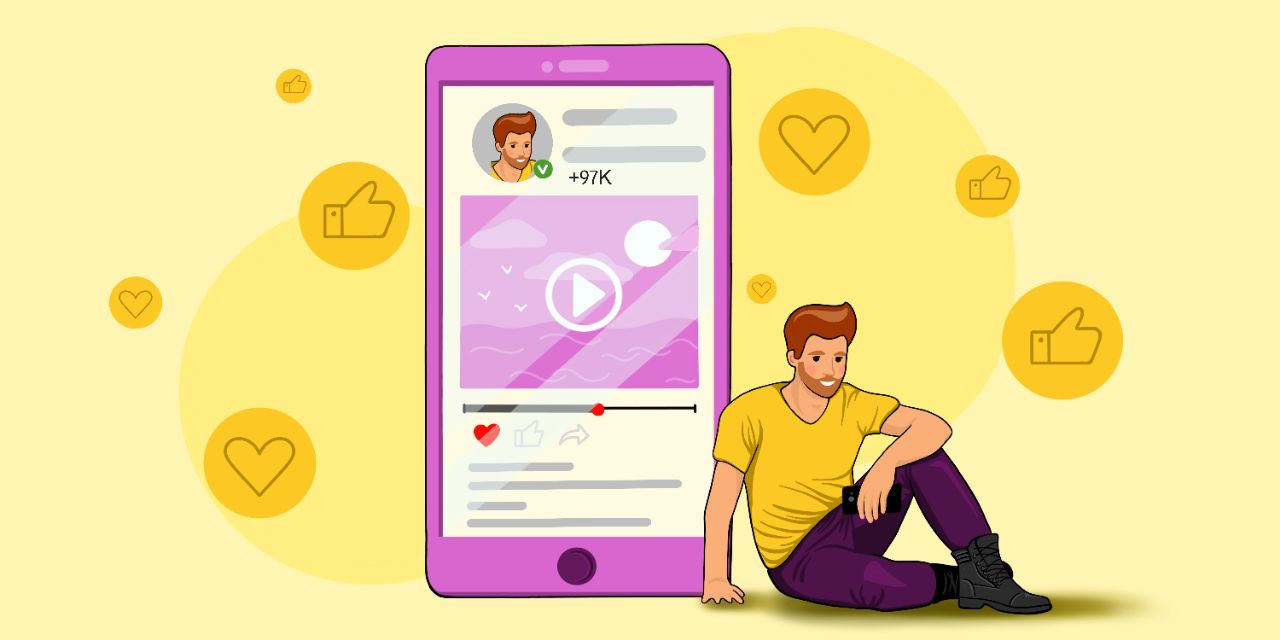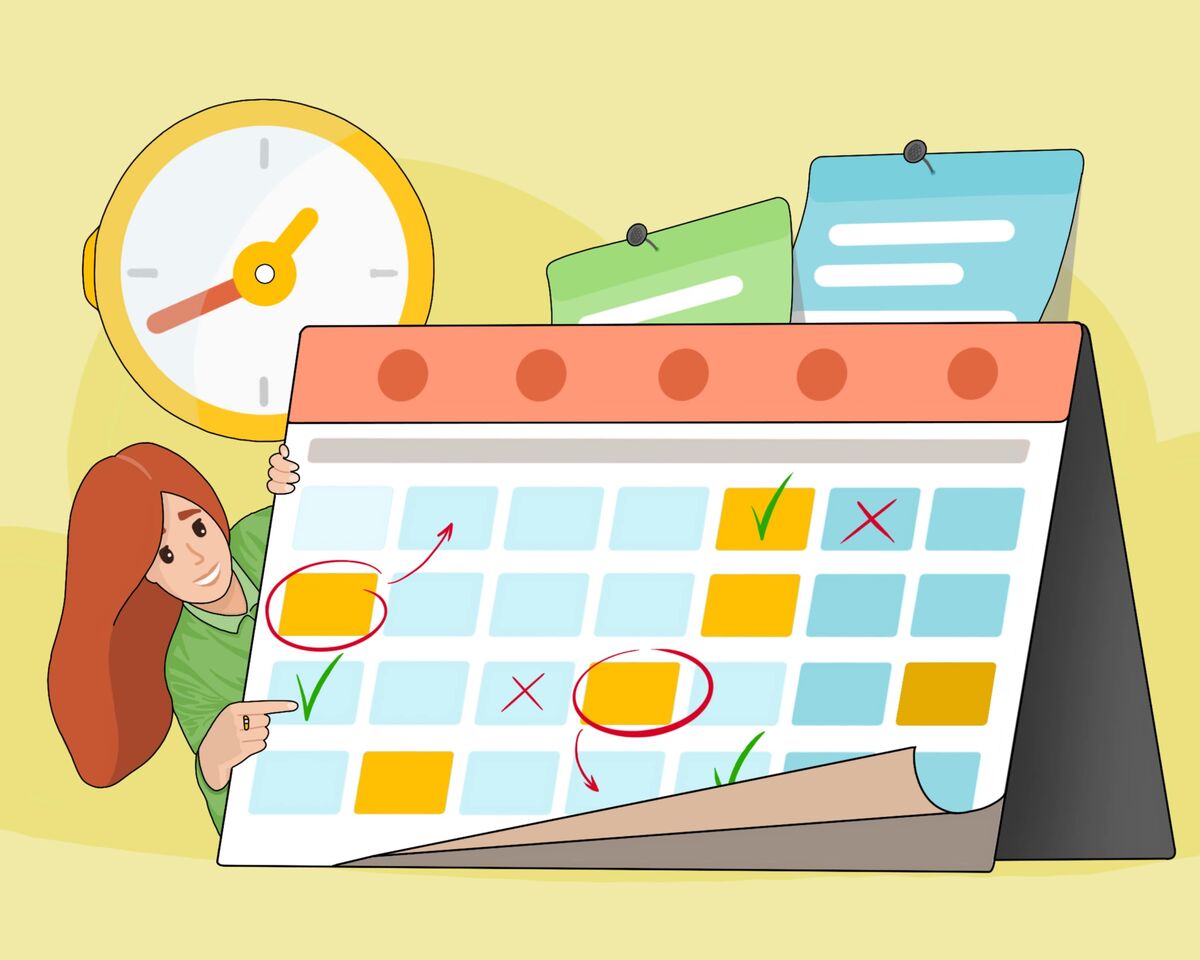How to Get Subscribers and Views on YouTube in 2023

How to get 1000 subscribers? How to accumulate watch hours if no one is watching your channel yet? Beginners on YouTube often find it challenging to find answers to all these questions right away. And it's even more difficult to understand the rules of the game on such a vast platform like YouTube.
We've prepared a simple guide for those who are starting their journey, taking into account what has changed on YouTube recently. It's time to refresh your knowledge about video sharing and social media platform!
Where to get subscribers and views on YouTube
If you take a closer look at monetization parameters, it's clear that the conditions differ for long and short videos. Therefore, your methods of promotion will also vary.
What traffic sources are relevant today?
- Search traffic
- Homepage
- YouTube recommendations
- Shorts feed
- External traffic sources and word of mouth
- Advertising
However, the most important thing that any creator on YouTube should know is not to try to focus on just one traffic source. You should work on all of them simultaneously because the more opportunities and reach, the better it is for channel growth.
How to work with YouTube traffic sources and gain subscribers and views
➔ Youtube Search
Let's start by breaking down the first traffic source - YouTube search. This means the views and subscribers who discover your content through YouTube's search bar.
The YouTube search algorithm prioritizes the following elements:
- Relevance: The algorithm tries to match factors such as the video title, tags, content, and description with the potential viewer's search query.
- Engagement: Signals include watch time, view percentage or retention, likes, comments, and other viewer activities under your video.
- Quality: To evaluate quality, the algorithm analyzes signals of video effectiveness to determine the channel's authority and reliability on the given topic. In simpler terms, it assesses how many people reported your video as unreliable.
- User search history and viewing history: What do viewers like, and what have they watched before? This will influence which search results YouTube's algorithm deems useful.
Article about algorithms: How the Youtube algorithms work
At the heart of any YouTube promotion strategy are both advantages and disadvantages. Let's start with the positives.
Gaining views from search traffic is relatively easy. This is because creators have more tools at their disposal to influence YouTube's algorithms.
One of the key tools for working with search traffic is SEO optimization. This tool helps you craft the textual content of your channel and videos in a way that aligns as closely as possible with your audience's search queries.
People use the search bar daily, and your goal is to create titles for your video, playlists, or channel that closely match what people are likely to type in the search bar.
For example, if you've made a video about how to cook soup, a logical title would be "How to Make Soup." This title reflects the video's topic and is likely to match people's search queries on the platform.
When people find your videos and enjoy them, it helps train YouTube's system to recommend your videos to even more people with similar queries and interests.
So, when you're just starting out, make sure to think about optimization and use all the possibilities offered by YouTube's search traffic.
Bonus: YouTube and Google are interconnected systems. If your videos start appearing in YouTube search results, there's a good chance they'll also show up in Google search results. This can significantly expand your reach.
Now, let's talk about the downsides of attracting an audience through search:
The downside of search traffic is that you have to wait for people to start searching for videos that match your video's title.
This process always takes time: until the algorithms align, until people start watching and promoting your video up the search results... So, be patient. Don't expect instant results when you publish your video.
Keep in mind that it's easier to attract views from search traffic than it is to gain subscribers.
Viewers search for answers to their questions, and if your video provides that answer, they mentally say, "Thank you very much," and move on with their day. Encouraging them to stay on your channel is a completely different challenge.
➔ Main Page and Recommendations
These are the videos that bring you views by appearing to viewers on their YouTube homepage or next to the video they're watching.
Here, the system works differently, as you're no longer targeting your content based on a specific search query. So, your task is to capture the attention of those who weren't even expecting to come across your video.
This is both the main advantage and disadvantage of the YouTube promotion strategy through recommendations.
These two sources of traffic are considered the most challenging for attracting a new audience, but they are also the most effective. If a video successfully enters recommendations and reaches the target audience once, it can bring you views and subscribers for years. The question is: how do you get there?
If we rely on YouTube's own data regarding how recommendation algorithms work, there isn't a wealth of useful information available. On the homepage, YouTube's algorithm looks at:
- Video performance
- User viewing history and search history
In the recommended videos section, the algorithm considers:
- The topic of the current video
- The viewer's history of video watching
So, there isn't much advice on how creators can influence their presence in recommended videos. Therefore, let's try and figure it out ourselves!
Many creators focus on having their videos recommended. However, unlike search traffic, creators don't have specific tools like working with keywords and viewer queries. The visuals and the topic of the video are more important in this case.
You must focus on the appearance of your video. The most important elements for YouTube’s homepage and becoming a recommended video are the thumbnail, title, and the first 15 seconds of the video. These are the aspects that viewers see when hovering over or scrolling through their mobile feed.
Before uploading a video to your YouTube channel, ask yourself, "Does my thumbnail help people find something that may be important or interesting to them?"
If you can't understand what your thumbnail is conveying, if you don't know whether it answers a key question or meets viewer expectations, then how will your audience understand why they should click on your video and spend time watching it? It's better not to rush and spend time creating a compelling thumbnail.
Can you simply create a clickbait thumbnail and get started? Of course, but isn't it smarter to spend time crafting the best version? Let's say this thumbnail brings you ten viewers. But if you put in a bit more effort and avoid rushing, you could get a hundred. The numbers are, of course, hypothetical, but you need to understand what you're missing when you don't think about these things in advance.
What about video titles? They impact a viewer's desire to click on your video just as much as thumbnails and introductions do. In fact, titles, thumbnails, and introductions work together.
Think about it: does the title intrigue enough to make someone want to open it? Is it informative enough to explain what the video is about? Is it emotionally appealing to the target audience? Does it pique curiosity? Would you click on the video if you saw this title on your homepage?
Let’s take a look at one other aspect of your content that you should review. YouTube shortens excessively long titles, so you need to ensure that the most compelling part, the part visible to the viewer, comes first.
Now, onto selecting a suitable video topic. This is a bit tricky. If you understand the audience you're creating for, you won't have any problems choosing video topics.
If you're choosing what to make a video about based on what you personally want to talk about, then it's highly likely that viewers will not be interested in your content. In that case, forget about being recommended by YouTube.
The "magic" of YouTube algorithms is in their ability to match videos with viewer interests. If you understand your target audience interests, you're guaranteed views and placement in recommendations.
So, here's the best piece of advice: ask yourself what your viewers want to see in your videos, not what you personally want.
➔ Shorts
Regarding YouTube Shorts, it's a new format for short videos aimed at creators who want to make memorable videos using only their mobile phones, according to YouTube's official definition. Unofficially, it's worth mentioning that many genuinely interesting Shorts are created not only on mobile phones. This format is as valid as long-form videos.
YouTube Shorts' slogan is "Shorts – a new way to express yourself in 15 seconds or less." That sounds great, but how do you get your Shorts to be seen by viewers? This is where the interesting part begins!
Shorts, in addition to having their own short video feed similar to TikTok, also appear on viewers' YouTube homepages and in YouTube and Google search results. From this, we can draw a simple conclusion: the recommendation algorithms for long and short videos work the same way.
So, what does YouTube consider when building recommendation systems for Shorts?
- Relevance: Does the title, tags, content, and description match the search query?
- Engagement: Do others like the video and comment on it?
- User viewing history: What did a particular viewer like or watch in the past?
- Similar content: What other shorts do similar viewers like to watch?
- Viewing time: Just as important as for long videos. If someone can't even sit through a 15-second video, that's not a good sign.
In short 😉, here's some promotion advice for short videos: create engaging Shorts, make them look as good as your long videos, and keep an eye on trends because short videos are more trend-focused than longer videos.
Which traffic source works best
In addition to considering all the above tips, it's necessary to analyze what works in the end and where you may have a drop in performance. To do this, you must use your YouTube analytics.
Go to your YouTube Studio, select any video of interest in the "Content" tab, and click on "Analytics."
In this section, look for "Advanced settings" and "Traffic source." You'll see a graph that shows which traffic source brings the most viewer love.
If you want to view analytics for your entire channel, go to "Analytics" in YouTube Studio, find the "Content" tab, and select "How viewers find you." You can also choose to view the same data for a specific type of content.
Remember: YouTube takes several months to compile statistics. So don't expect precise numbers and results when you're just starting out.
How to get hours of views
Despite the fact that all traffic sources, when handled correctly, will bring you subscribers and views, we need to talk separately about the specifics of the “watch hours” metric.
Your number of watch hours is directly dependent on how interesting your videos are, what you include in them, and how you engage with your audience throughout the video. Your content’s retention or, how long a person watches, will demonstrate how “interesting” your video is to the end viewer.
You can find information about retention in your channel's analytics, we recommend analyzing the retention for each individual video on your channel.
Here's how analyze retention:
1. Select a video, go to its analytics under the "Interaction" tab, and study everything that YouTube provides about how viewers are watching your video.
2. Check how many viewers drop off at the beginning and evaluate what you can add or remove in the introduction.
3. Examine which moments are the most viewed and replayed, what interesting elements you included, and what engaged viewers the most. This might hide the secret to your future success.
4. Don't forget to assess the moments that performed poorly, where people left or simply skipped through.
5. Observe how well the audience watches the video. Perhaps you're providing too much unnecessary information, and it's better to cut it down and leave more intrigue to prevent viewers from leaving.
6. You can also explore the detailed activity of your audience to see how many people left the video at a specific point.
Remember that watch time is important, but it's not the only factor that determines the success of your video. If your watch time isn't increasing, we recommend focusing on retention. It's like a detailed script for your video.
Reactions to your video are more important for promotion and popularity than watch time or retention. YouTube values reactions higher. Therefore, it's crucial to encourage and provoke viewers to react during the video. Their activity will drive your success.
Apart from the usual calls to subscribe to the channel, it's more important to encourage viewers to do something else after watching one video – watch the next one. Because, as we've learned earlier, one view alone may not provide much, but if you engage the viewer with your content, that's when your real promotion on YouTube begins.
We hope this guide can serve as a good reference point for your creative journey on YouTube. Just remember - don’t chase one specific metric. Consider the above information as a guiding North Star, but not a destination to be reached at any expense. If you make compelling content for a clearly defined target audience, you will gain subscribers and views. Good luck in promoting your channel and content!




